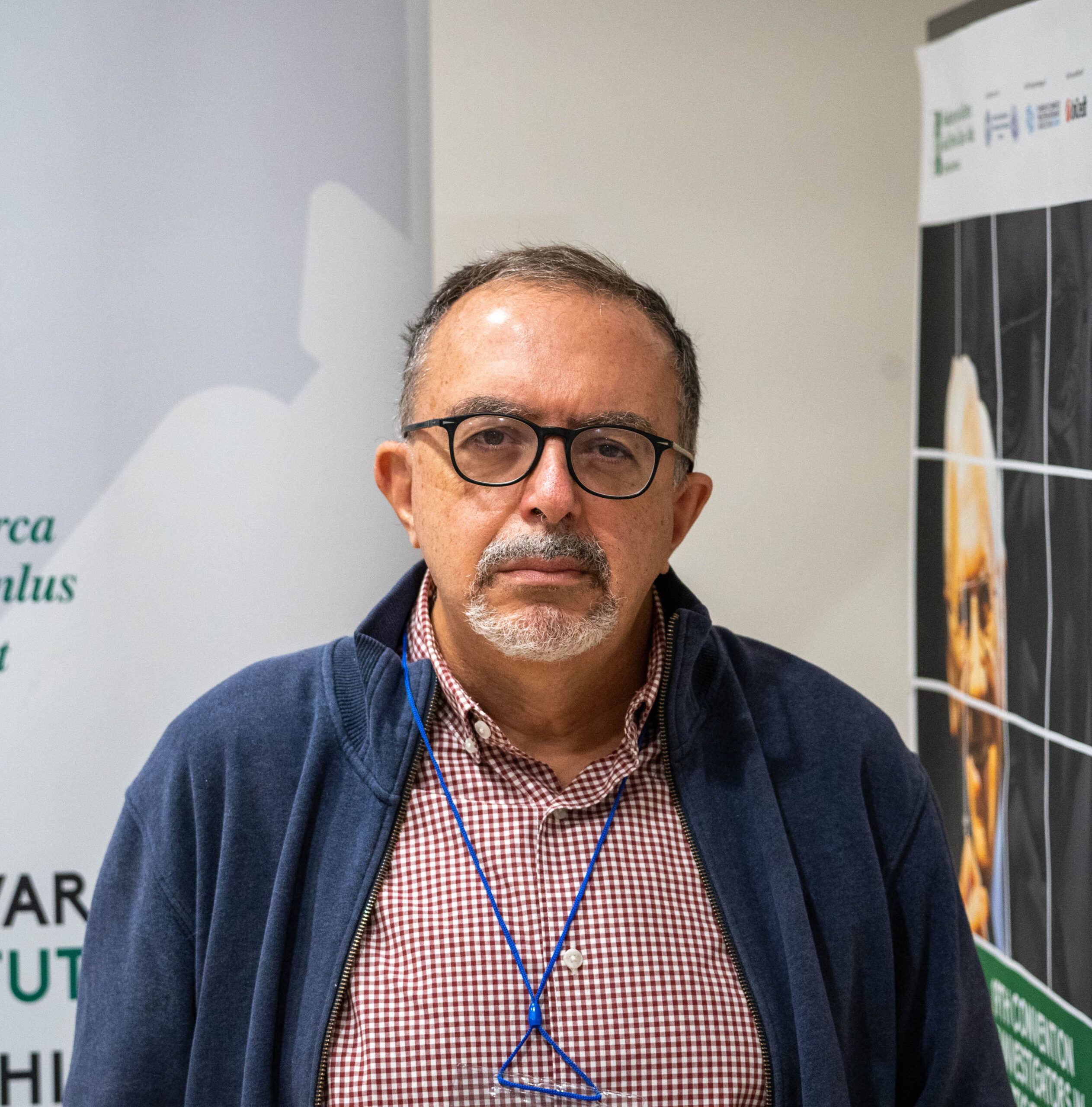Born in Caracas, Venezuela, in 1959, Luis Galietta graduated in Biological Sciences from Federico II University of Naples. He began his research career with a fellowship from the Giannina Gaslini Institute in Genoa. After several experiences in the United States, he returned to Italy. Galietta spent many years as a researcher and senior scientist at the Molecular Genetics Laboratory of the Giannina Gaslini Institute. Since 2017, he has conducted research at the Telethon Institute of Genetics and Medicine (TIGEM) in Pozzuoli (Naples), in close collaboration with the Giannina Gaslini Institute. Since 2018, he has been an Associate Professor of Medical Genetics at Federico II University of Naples.
His work has included studying ion channels in human fibroblasts and keratocytes at the Gaslini Institute and the Institute of Cybernetics and Biophysics (CNR). He has also worked on the development of novel fluorescent proteins to study ion channels and transporters. He is actively involved in high-throughput screening of chemical compounds to identify pharmacological modulators of the CFTR protein. He has served as the coordinator and now co-leader of the strategic project Task Force for Cystic Fibrosis (TFCF) in collaboration with the Italian Institute of Technology (IIT) in Genoa.
He has published over 200 papers in international journals.
Projects funded by FFC Ricerca as Principal Investigator
FFC#9/2022
Effect of inflammatory stimuli on airway epithelium ion transport in cystic fibrosis
FFC/Molecules 3.0
FFC Research strategic project 2021-2023. Molecules 3.0 for cystic fibrosis. Phase 2 New pharmacological modulators for the recovery of mutated CFTR protein
FFC#6/2019
Identification of deubiquitinases and ubiquitin ligases that affect mutant CFTR rescue
FFC#2/2017
Identification of deubiquitinases and ubiquitin ligases that affect mutant CFTR rescue
FFC/TFCF 3ª fase
Task Force for Cystic Fibrosis
FFC/TFCF 2ª fase
Task Force for Cystic Fibrosis
FFC/TFCF 1ª fase
Task Force for Cystic Fibrosis
FFC#2/2012
Development of novel strategies to correct the chloride transport defect in cystic fibrosis
FFC#2/2009
Development of small molecules to correct the defective chloride transport in cystic fibrosis
FFC#3/2006
Identification, optimization, and validation of potentiators and correctors for the pharmacotherapy of cystic fibrosis
FFC#3/2003
Screening of drugs approved for human use to identify novel pharmacological tools for cystic fibrosis
Projects financed by FFC Ricerca as a partner
FFC/TFCF fase preclinica
Task Force for Cystic Fibrosis
FFC #3/2007
Computational design, biochemical study, synthesis and screening of pharmacological chaperones as correctors of ΔF508-CFTR
Publications from FFC Ricerca projects
- Pedemonte N, Lukacs GL, Du K, et al. Small-molecule correctors of defective DeltaF508-CFTR cellular processing identified by high-throughput screening. J Clin Invest, 2005 Sep;115(9):2564-71. Epub 2005 Aug 25.
- Pedemonte N, Diena T, Caci E, et al. Antihypertensive 1,4-dihydropyridines as correctors of the cystic fibrosis transmembrane conductance regulator channel gating defect caused by cystic fibrosis mutations. Mol Pharmacol, 2005 Dec;68(6):1736-46. Epub 2005 Sep 8.
- Pedemonte N, Boido D, Moran O, et al. Structure-activity relationship of 1,4-dihydropyridines as potentiators of the cystic fibrosis transmembrane conductance regulator chloride channel. Mol Pharmacol, 2007 Jul;72(1):197-207. Epub 2007 Apr 23.
- Caputo A, Caci E, Ferrera L, et al. TMEM16A, a membrane protein associated with calcium-dependent chloride channel activity. Science, 2008 Oct 24;322(5901):590-4. doi: 10.1126/science.1163518. Epub 2008 Sep 4.
- Caputo A, Hinzpeter A, Caci E, et al. Mutation-specific potency and efficacy of cystic fibrosis transmembrane conductance regulator chloride channel potentiators. J Pharmacol Exp Ther, 2009 Sep;330(3):783-91. doi: 10.1124/jpet.109.154146. Epub 2009 Jun 2.
- Ferrera L, Caputo A, Ubby I, et al. Regulation of TMEM16A chloride channel properties by alternative splicing. J Biol Chem, 2009 Nov 27;284(48):33360-8. doi: 10.1074/jbc.M109.046607. Epub 2009 Oct 9.
- Sondo E, Tomati V, Caci E, et al. Rescue of the mutant CFTR chloride channel by pharmacological correctors and low temperatureanalyzed by gene expression profiling. Am J Physiol Cell Physiol 2011 Oct;301(4):C872-85. doi: 10.1152/ajpcell.00507.2010. Epub 2011 Jul 13.
- Ferrera L, Scudieri P, Sondo E, et al. A minimal isoform of the TMEM16A protein associated with chloride channel activity. Biochim Biophys Acta, 2011 Sep;1808(9):2214-23. doi: 10.1016/j.bbamem.2011.05.017. Epub 2011 May 30.
- Budriesi R, Ioan P, Leoni A, et al. Cystic fibrosis: a new target for 4-Imidazo[2,1-b]thiazole-1,4-dihydropyridines. J Med Chem, 2011 Jun 9;54(11):3885-94. doi: 10.1021/jm200199r. Epub 2011 May 13.
- Giampieri M, Vanthuyne N, Nieddu E, et al. Asymmetric 4-aryl-1,4-dihydropyridines potentiate mutant cystic fibrosis transmembraneconductance regulator (CFTR). ChemMedChem, 2012 Oct;7(10):1799-807. doi: 10.1002/cmdc.201200311. Epub 2012 Aug 27.
- Scudieri P, Sondo E, Ferrera L, et al. The anoctamin family: TMEM16A and TMEM16B as calcium-activated chloride channels. Exp Physiol, 2012 Feb;97(2):177-83. doi: 10.1113/expphysiol.2011.058198. Epub 2011 Oct 7.
- Scudieri P, Caci E, Bruno S, et al. Association of TMEM16A chloride channel overexpression with airway goblet cell metaplasia. J Physiol, 2012 Dec 1;590(23):6141-55. doi: 10.1113/jphysiol.2012.240838. Epub 2012 Sep 17.
- Sondo E, Scudieri P, Tomati V, et al. Non-canonical translation start sites in TMEM16A chloride channel. Biochim Biophys Acta, 2014 Jan;1838(1 Pt B):89-97. doi: 10.1016/j.bbamem.2013.08.010. Epub 2013 Aug 28.
- Scudieri P, Sondo E, Caci E, et al. TMEM16A-TMEM16B chimaeras to investigate the structure-function relationship of calcium-activated chloride channels. Biochem J, 2013 Jun 15;452(3):443-55. doi: 10.1042/BJ20130348.
- Sondo E, Caci E, Galietta LJ. The TMEM16A chloride channel as an alternative therapeutic target in cystic fibrosis. Int J Biochem Cell Biol, 2014 Jul;52:73-6. doi: 10.1016/j.biocel.2014.03.022. Epub 2014 Apr 1.
- Pedemonte N, Galietta LJ. Structure and functions of TMEM 16 Proteins (Anoctamins). PHYSIOL REV, 2014.
- Caci E, Scudieri P, Di Carlo E, et al. Upregulation of TMEM16A Protein in Bronchial Epithelial Cells by Bacterial Pyocyanin. PLoS One, 2015 Jun 29;10(6):e0131775. doi: 10.1371/journal.pone.0131775. eCollection 2015.
- Pesce E, Sondo E, Ferrera L, et al. The Autophagy Inhibitor Spautin-1 Antagonizes Rescue of Mutant CFTR Through an Autophagy-Independent and USP13-Mediated Mechanism. Front Pharmacol. 2018 Dec 13;9:1464. doi: 10.3389/fphar.2018.01464. eCollection 2018.

